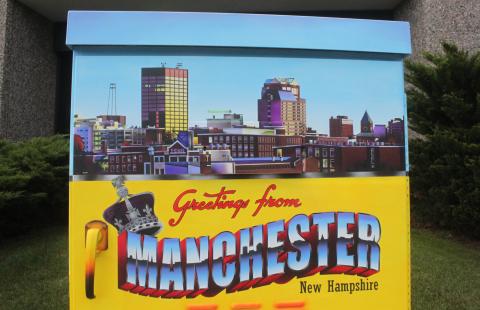What were the specific goals of this creative economy project? Describe the community development challenge or opportunity that your project was designed to address:
The revitalization of downtown Manchester over the past 5-10 years has been focused, understandably, on economic development, business, and infrastructure. Besides maintaining the historic charm of downtown, little consideration has been given to art or aesthetics. The city is a blank canvas for public art.
The goals of this pilot project are to:
1) Beautify the city by infusing art, color, and creativity into the urban landscape
2) Add to the vitality and attractiveness of the downtown core while deterring graffiti
3) Highlight and celebrate local artists
If the goals change over time, please describe how:
It has only been one year, so we don't know yet.
Who was involved in this project and what did they do? (be sure to include the partners from outside of the creative sector and how local voices were included):
Property owners: City of Manchester: Mayor and Board of Aldermen, City of Manchester: Highway Department
Project coordinators: Studio 550 ART CENTER, InTown Manchester (downtown development corporation)
Local Artists: Rob Sardella, Nancy Welsh, Carolina Davidson were selected to paint one box each.
Local Business Sponsors: Baker Newman Noyes (accounting firm), Granite YMCA, Cityside Management Corporation (property management) provided funds for the artist stipends.
Volunteers from a local Art Honor Society Chapter helped to sand and clean the boxes before the artists painted and clear coat the boxes afterward.
How does this project relate to a larger community development strategy?
We did not reference a particular document or plan in bringing this project to fruition. We were operating under the premise that a project that made the city more attractive visually or culturally would trickle down to benefit the residents, the businesses and more.
What projects or places, if any, inspired your approach to this creative economy project?
There was no location in particular. Many other cities have implemented a similar project, all with slight variations to make it fit based on their resources. For example, some cities had one artist paint a set of boxes, others had a similar call for entries, while others still had the artist designs printed onto a vinyl wrap for installation (instead of paint). To name just a few, Brisbane Australia; San Jose, CA; and Tampa, FL. have similar projects. We actually didn't know how many other cities had implemented a utility box painting project until we started to research it.
